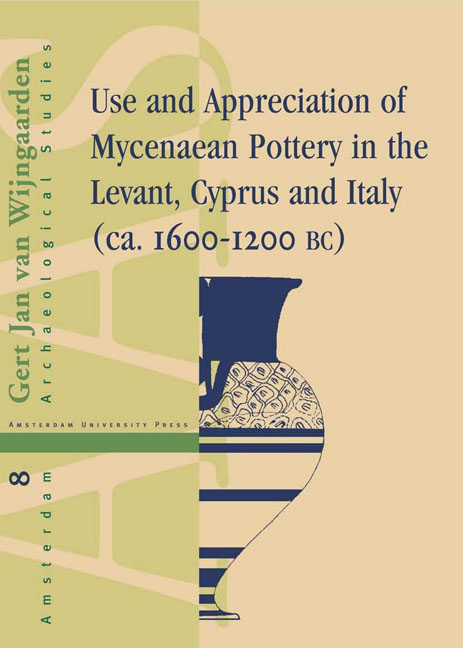9 - Mycenaean Pottery in Cyprus: Introduction
Published online by Cambridge University Press: 10 February 2021
Summary
PREVIOUS RESEARCH
That Mycenaean pottery was very abundant in Cyprus was already realised by Furtwängler and Löschke at the end of the 19th century. They mentioned thirty-seven Mycenaean pots and three findspots, while stating that there were many more from the island, scattered over several collections. Furtwängler and Löschke noticed that in comparison to mainland Greece, chariot kraters and decorated flasks were more frequent in Cyprus. Differences in the corpus of Mycenaean pottery between Cyprus and mainland Greece were also noted by Myres and Ohnefalsch-Richter, who argued for the production of Mycenaean pottery on the island itself. They were the first to make a distinction between genuine Mycenaean ware and local imitations on the basis of a description of fabrics. A distinction between Minoan, Cycladic and Helladic pottery in Cyprus was made in 1926 by Gjerstad, who stated that already during the LC I period pots produced on the Greek mainland exceeded those from Crete or the Aegean islands. He also reported that the number of Aegean finds in Cyprus was well over a thousand, while Fimmen was able to list twenty findspots of Mycenaean pottery on the island.
In the 1930s the first three volumes of the Swedish Cyprus Expedition were published. Among the sites discussed, Enkomi (site no. 56), where the Swedes had excavated part of the necropolis is especially important. In 1951, Frank Stubbings emphasized that the differences between Mycenaean pottery from Cyprus and mainland Greece was one of repertoire only. In his view, technique, shape and decoration all pointed to manufacture on mainland Greece. Stubbing's work is also important because he showed a difference in the distribution of Mycenaean pottery on Cyprus between LH IIIA2 and LH IIIB. In comparison with the relative homogeneity of LH IIIA2 pottery, Stubbings noted more local imitations of the LH IIIB style and a growing number of local peculiarities in shape and decoration, coupled with some differences in the texture of the clay. In his view, these changes testified to the LH IIIB pottery being imported not only from the Peloponnese, but also from peripheral areas of the Mycenaean region, such as Rhodes.
Scientific analysis of the composition of Late Helladic ware on Cyprus had already been carried out in the 1940s.
- Type
- Chapter
- Information
- Use and Appreciation of Mycenaean Potteryin the Levant, Cyprus and Italy (1600-120O BC), pp. 125 - 128Publisher: Amsterdam University PressPrint publication year: 2002



